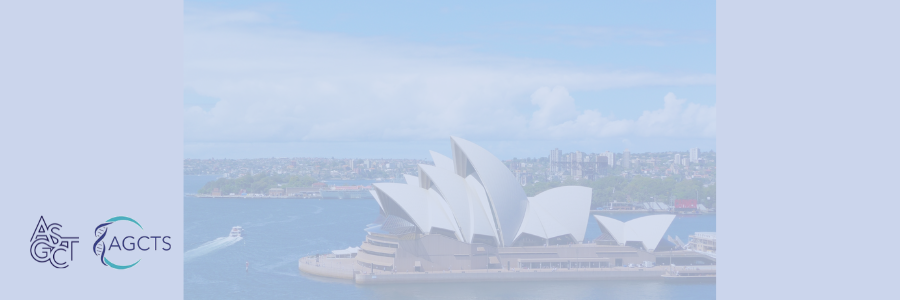Learn the Latest on Gene Therapy in Australia
Samantha Ginn, PhD - October 25, 2023
Dr. Samantha Ginn recaps ASGCT's "Around the World: Gene Therapy for the Liver, Eye, & Hematopoietic System in Australia" symposium. Watch the recording of the August event on YouTube now!

On Aug. 30, the American Society of Gene and Cell Therapy, together with the Australasian Gene and Cell Therapy Society, held a symposium “Around the World: Gene Therapy for the Liver, Eye, & Hematopoietic System in Australia.” It provided an opportunity to highlight just some of the current advances in gene therapies happening in Australia. During the session, our speakers shared their latest gene therapy research targeting three key organ systems: the liver, eye, and haematopoietic system.
Marti Cabanes-Creus, PhD, based at the Children’s Medical Research Institute (Westmead, Sydney), began the session by providing an overview of his work in AAV capsid development for the human liver. In particular, the variable region 1 (VR-1) of the AAV capsid was identified as an important region for capsid engineering. Dr. Cabanes-Creus discussed the importance of using relevant model systems for translation into the human clinical setting, such as humanized mice with chimeric-human livers and whole human liver explants. Using both of these models, Dr. Cabanes-Creus described novel AAV capsid variants with unprecedented tropism for human hepatocytes. These elite capsids, in combination with a basic understanding of AAV transduction, will be vital for designing better vectors, enabling efficient gene transfer at lower doses that will ultimately improve the overall safety of the treatment.
Livia Carvalho, PhD, from the Lions Eye Institute (Perth, Western Australia) then described work evaluating a murine model for the KCNV2 retinopathy caused by mutations in the voltage-gated (Kv) potassium channel Kv8.2 subunit. Mutations in Kv8.2 cause a form of irreversible blindness known as cone dystrophy with supernormal rod response (CDSRR). Using Kv8.2 knock out mice, two AAV vectors that were optimised for specific photoreceptor targeting demonstrated a dose dependent impact on the electrophysiological (ERG) retinal response, recovery of visual acuity, and restoration of Kv8.2 protein expression in the treated areas of the retina. No increased immune responses were observed. These promising in vivo results provide the foundations for a future clinical trial in humans with this condition.
Returning to the theme of AAV capsid development, Grant Logan, PhD, also from the Children’s Medical Research Institute described his work, in collaboration with the McKenna laboratory (Center for Structural Biology, University of Florida), characterising anti-capsid monoclonal antibodies (mAbs) from switched-memory B cells isolated from infants following gene therapy for spinal muscular atrophy (SMA). Dr Logan has functionally characterised these mAbs for their ability to neutralise AAV transduction and determined their AAV binding affinities. In addition, AAV9 capsid-human antibody interactions were observed by using cryo-electron microscopy, an important first step towards engineering AAV capsids with the ability to evade polyclonal anti-capsid responses and other translational applications.
The final speaker of the session, Andrew Deans, PhD, from the Genome Stability Unit at St Vincent’s Institute (Melbourne, Victoria), presented an overview of his work that aims to improve the range and efficiency of prime editing for the bone marrow. Associate Professor Deans described his team’s use of a novel assay system, developed by Astrid Glaser, PhD, that converts the GFP reporter gene to BFP, to optimize and evaluate the efficiency of prime editing reagents for delivery to haematopoietic stem cells (HSCs). Following delivery of optimised prime editing reagents, high levels of allelic conversion were observed in HSCs, highlighting the utility of this gene reporter system.
This dynamic session highlighted some the exciting research being undertaken in Australia, provided insights into AAV capsid biology and engineering, and demonstrated the importance and value of using preclinical model systems that can be used to evaluate and optimize gene delivery and genome editing reagents rapidly and accurately predict likely outcomes in human trials.
Watch on YouTube Now
Samantha Ginn, PhD, is a senior research officer at the Children's Medical Research Institute. She moderated the panel discussion at the "Around the World: Australia" symposium.
Related Articles